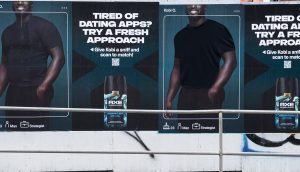To identify the work Canada’s media gurus think best exemplifies smart new media thinking, every Friday MiC invites guest curators to share Really Important Things That Are Happening in the mediaverse.
Today, Carat Canada COO Cynthia Fleming shares her P.O.V.
Social marketing online is unfamiliar territory to most advertisers. Many marketers don’t have the tools or resources to activate social marketing in the digital space, however, what is really holding them back is the idea of interacting with consumers about their brand in a public forum. They’re afraid of losing control of the conversation.
Horror stories on marketers who have executed SMO poorly are everywhere. Backlash occurs when SMO efforts are not relevant to the audience and the brand. The SMO spin created for the Skittles home page was designed to give their web presence a direct connection with customers and provide the brand with a steady stream of user-created content. However, it became PR buzz versus an effective SMO effort as many people perceived it as simply hijacking SM links. Some companies, like Zappos.com, get it right. CEO Tony Hsieh is viewed as someone who loves Twitter and who just happens to run an online shoe company – and, as a result, has over half a million followers.
Marketers do need to understand the volume and nature of discussions that are taking place online about their brands, and it’s important to establish a long-term SMO strategy and enter the conversation. If brands are not available online to respond, consumers will step in – and not always with a brand-building response. A quick word cloud done for Bell Mobility shows at a glance the nature of online conversation relating to the brand. A strong SMO campaign can effectively address customer concerns.

Dell did it right. It changed the tone of conversation online. At the low point in 2006, Dell calculated that at least 50% of online conversations about the brand was negative. Today, Dell calculates the negative conversation percentage at 23%, and is confident that blogging efforts contributed to this shift. Initiatives include the Direct2Dell blog, and the launch of IdeaStorm in 2007 – directly soliciting ideas from the online community.
The success of IdeaStorm led to the launch of Dell EmployeeStorm to generate ideas and comments from its 88,000 employees. It also continues the conversation via SM sites like Twitter.
So here are four things to remember when activating a SMO campaign:
1) Join conversations that consumers are having about your brand.
2) Address any form of customer dissatisfaction head-on, knowing that not everything will be solved.
3) Provide value (such as information on current/new products and services, discounts etc.).
4) Create a forum for customers to share their experiences and ideas.
Now, get on that!























